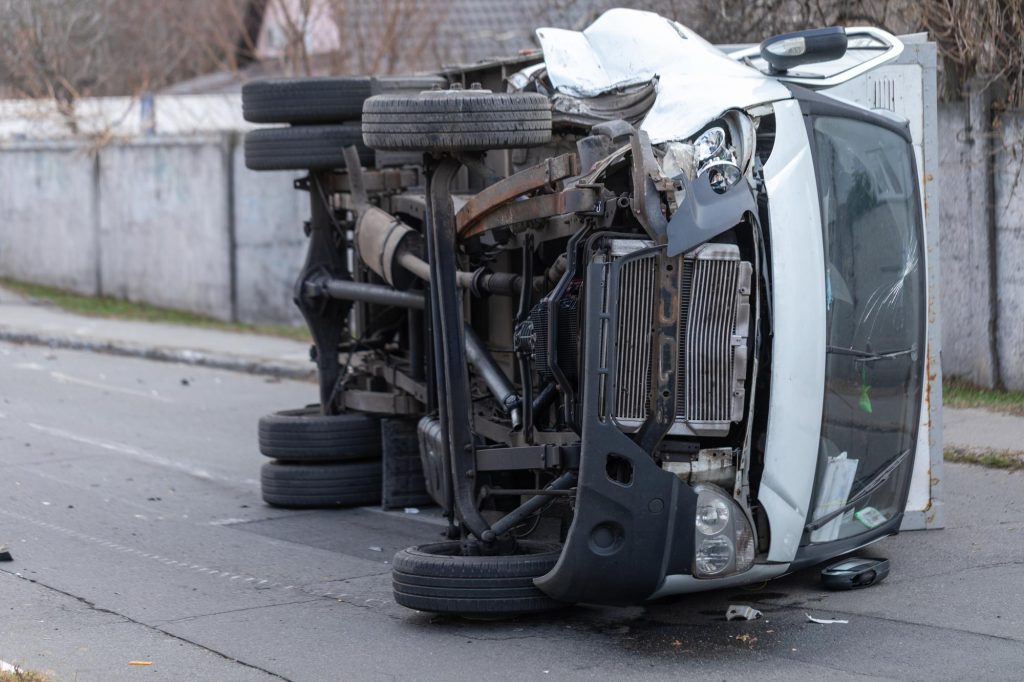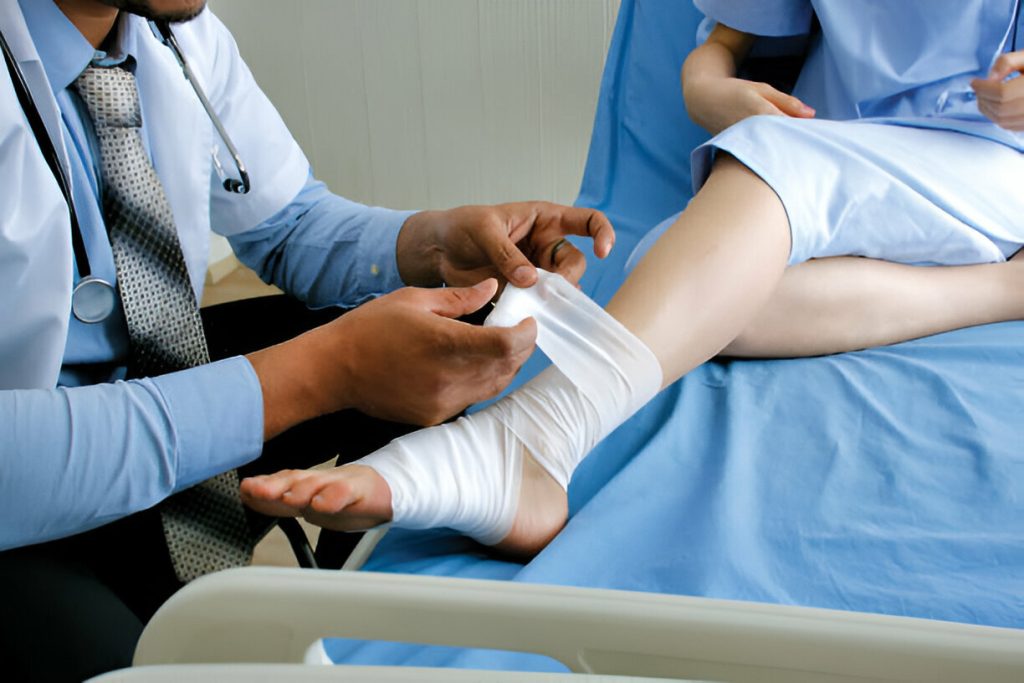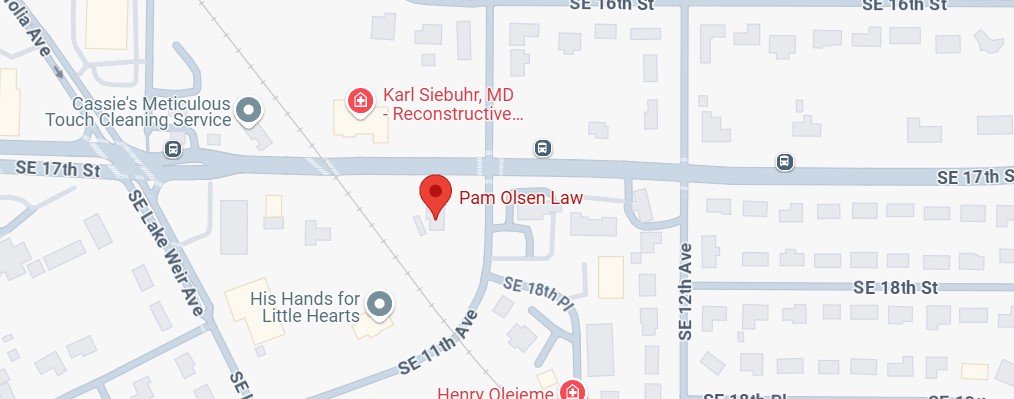Key Takeaways:
- Hit-and-Run Accidents Are Alarmingly Common in Marion County – In 2023, Marion County experienced approximately 1,436 hit-and-run accidents, resulting in 429 injuries and 6 deaths, which means roughly 4 hit-and-run collisions occur daily in the county.
- Driver Identification Presents the Greatest Challenge – The most significant obstacle in hit-and-run cases is locating the responsible driver, requiring reliance on witness accounts, surveillance footage, physical evidence like paint transfer and vehicle debris, and partial license plate information that witnesses may have observed.
- Insurance Complications Create Financial Barriers – Victims must typically file claims under their own uninsured motorist coverage, which may have lower limits than the at-fault driver’s insurance would have provided, and they may face claim denials, coverage gaps, and upfront deductible payments.
- Drivers Flee for Multiple Reasons – Common motivations include fear of legal consequences (suspended licenses, outstanding warrants), lack of insurance coverage, operating stolen vehicles, immigration status concerns, and previous convictions that could result in enhanced penalties.
- Evidence Collection Must Happen Immediately – Physical evidence at the scene can disappear quickly due to weather, traffic, or cleanup efforts, witness memories fade over time, and surveillance footage may be automatically overwritten after a certain period, making immediate action crucial.
- Victims Face Extensive Financial and Emotional Impact – Beyond medical bills and lost wages, victims experience immediate payment requirements without clear insurance coverage, transportation costs, legal fees, and significant emotional distress including feelings of abandonment, anxiety, and trauma.
- Legal Representation Provides Critical Advantages – Experienced attorneys can hire private investigators, use subpoena powers to access records individuals cannot obtain, conduct independent investigations, and navigate complex insurance claims while maximizing compensation through policy analysis and negotiation expertise.
- Time Limits Are Strictly Enforced – Victims have four years from the accident date to file a personal injury lawsuit in Florida, but evidence preservation is time-sensitive, with immediate physical evidence needs, 24-48 hour witness availability windows, and 1-2 week surveillance footage retention periods.
- Multiple Compensation Options Exist – Victims can pursue economic damages (medical expenses, lost wages, property damage) and non-economic damages (pain and suffering, emotional distress, loss of enjoyment of life), with compensation amounts affected by injury severity, insurance policy limits, and evidence quality.
- Immediate Action Steps Are Essential – Critical steps include ensuring safety and calling 911, seeking medical attention even if feeling fine, documenting everything with photos, gathering witness information, filing a police report immediately, and contacting both insurance companies and experienced legal counsel as soon as possible.
When a driver flees the scene in Ocala, they’re not just running from the law – they’re running from your medical bills.If you’ve been the victim of a hit-and-run accident in Ocala, you’re probably feeling angry, confused, and worried about how you’ll pay for damages when the other driver is nowhere to be found. Every year in Marion County, hundreds of drivers flee the scene after causing accidents, leaving innocent victims to deal with mounting medical bills, car repairs, and insurance companies that seem more interested in denying claims than helping you recover.
Here’s what many hit-and-run victims don’t know: you may still be entitled to full compensation even when the at-fault driver can’t be located. Your own insurance policy likely contains uninsured motorist coverage that should cover your injuries and damages – but insurance companies often try to minimize these payouts or deny them entirely. As an experienced Ocala hit-and-run accident lawyer with 34 years of fighting for victims’ rights, I’ve helped countless clients recover the compensation they deserved after being abandoned by fleeing drivers. Don’t let a coward’s decision to flee cost you the recovery you’re legally entitled to.”
Understanding Hit-and-Run Accidents in Ocala, FL
A hit-and-run accident occurs when a driver involved in a collision flees the scene without stopping to exchange information, check on injuries, or fulfill their legal obligations. In Ocala, these incidents have become alarmingly common, creating serious consequences for victims who are left to pick up the pieces.
The statistics paint a concerning picture. In 2023, Marion County experienced approximately 1,436 hit-and-run accidents, resulting in 429 injuries and 6 deaths—based on compiled crash trends and public records available through the Florida Highway Safety and Motor Vehicles (FLHSMV) crash portal. This means roughly 4 hit-and-run collisions occur daily in our county. These numbers aren’t just statistics – they represent real people facing real challenges in their recovery and pursuit of justice.
Common Causes of Hit-and-Run Accidents in Ocala
Understanding why these accidents happen helps us recognize the patterns and potentially prevent them. The most common causes include:
Distracted Driving: Cell phone use and other distractions contribute significantly to accidents. When drivers cause crashes due to distraction, they often flee to avoid immediate consequences and potential charges.
Impaired Driving: Alcohol and drug impairment remain major contributors to hit-and-run crashes. Drunk drivers often flee because they fear DUI charges, which can be more severe than staying at the scene.
Speeding and Reckless Driving: Excessive speed increases both accident severity and the likelihood that drivers will flee to avoid speeding tickets or reckless driving charges.
Uninsured Drivers: Many hit-and-run drivers flee because they lack proper insurance coverage and fear the financial consequences of staying.
Why Do Hit-and-Run Drivers Flee the Scene?
The reasons drivers choose to flee vary, but they all create additional challenges for victims:
- Fear of Legal Consequences: Drivers with suspended licenses, outstanding warrants, or those under the influence often panic and flee
- Lack of Insurance: Uninsured drivers fear significant financial liability
- Stolen Vehicles: Drivers operating stolen vehicles naturally avoid police contactImmigration Status Concerns: Some drivers fear deportation or other immigration consequences
- Previous Convictions: Drivers with criminal histories may face enhanced penalties
Understanding these motivations helps explain why identifying and locating hit-and-run drivers proves so challenging.
What are the Unique Challenges of Hit-and-Run Accident Cases
Hit-and-run cases present distinct obstacles that don’t exist in typical car accidents. These challenges affect every aspect of your case, from gathering evidence to securing compensation.
Difficulty Identifying the Responsible Driver
The most obvious challenge is that the at-fault driver isn’t present at the scene. Without the other driver’s information, you must rely on:
- Witness Accounts: Bystanders who may have seen the accident or fleeing vehicle
- Surveillance Footage: Cameras from nearby businesses, traffic lights, or residential security systems
- Physical Evidence: Paint transfer, vehicle parts, or debris left at the scene
- License Plate Information: Partial plates that witnesses may have observed
This evidence gathering process takes time, and crucial information can disappear quickly. That’s why acting immediately after a hit-and-run accident is essential.
Challenges in Proving Fault and Accident Circumstances
In typical car accidents, both parties can provide their version of events. In hit-and-run cases, you only have one side of the story, making it more difficult to establish:
- How the accident occurred
- Who was at fault
- The extent of damages caused
- Whether any contributing factors existed
Police reports become crucial in these situations, but they may be incomplete without the fleeing driver’s account.
Insurance Complications
Hit-and-run cases create unique insurance challenges that can significantly impact your recovery:
Uninsured Motorist Claims: You’ll likely need to file a claim under your own uninsured motorist coverage, which may have lower limits than the at-fault driver’s insurance would have provided.
Claim Denials: Insurance companies may deny claims or dispute the extent of damages without the other driver present to confirm fault.
Coverage Gaps: If your uninsured motorist coverage is insufficient, you may face significant out-of-pocket expenses.
Deductibles: You may need to pay your collision deductible upfront, which can strain your finances while you’re unable to work.
Hit-and-Run Accident Impact on Victims
The consequences of hit-and-run accidents extend far beyond the initial collision, affecting multiple aspects of your life.
Medical and Physical Challenges
Immediate Medical Attention: You need immediate medical care regardless of whether the other driver is present. However, without clear insurance coverage, emergency room visits and medical treatment can create financial stress.
Ongoing Medical Expenses: Serious injuries from hit-and-run crashes often require extended medical treatment, physical therapy, and sometimes multiple surgeries.
Documentation Difficulties: Without the at-fault driver’s insurance information, documenting your injuries and linking them to the accident becomes more complex.
Financial Strain
The financial impact of hit-and-run accidents can be devastating:
| Expense Type | Challenge |
| Medical Bills | Immediate payment required without clear insurance coverage |
| Lost Wages | Income lost while recovering, with delayed compensation |
| Property Damage | Vehicle repairs or replacement costs |
| Transportation | Alternative transportation while your car is being repaired |
| Legal Fees | Attorney costs for complex hit-and-run cases |
Emotional Distress
The psychological impact of hit-and-run accidents often exceeds that of typical car accidents:
- Feeling Abandoned: The fleeing driver’s actions can create feelings of betrayal and helplessness
- Anxiety and Fear: Uncertainty about compensation and justice can cause ongoing stress
- Trauma: The accident itself, combined with the aftermath, can lead to post-traumatic stress
- Frustration: Dealing with insurance companies and legal processes without clear fault determination
At-Fault Driver Identification Challenges
Locating the responsible driver in hit-and-run cases requires extensive investigation and often depends on factors beyond your control.
Evidence Collection Timeline
Immediate Evidence: Physical evidence at the scene, such as skid marks, vehicle debris, and paint transfer, can disappear quickly due to weather, traffic, or cleanup efforts.
Witness Availability: Witnesses may leave the scene quickly, and their memories can fade over time. Getting their contact information immediately is crucial.
Surveillance Footage: Security cameras may automatically overwrite footage after a certain period, making quick action essential.
Investigation Limitations
Resource Constraints: Police departments may have limited resources for investigating hit-and-run accidents, especially those involving only property damage.
Jurisdictional Issues: If the accident occurred near city or county boundaries, determining which agency handles the investigation can cause delays.
Evidence Quality: Poor lighting, weather conditions, or limited visibility can make witness accounts and surveillance footage less reliable.
Free Consultation: Steps to Take After a Hit-and-Run Accident in Ocala
If you’re involved in a hit-and-run accident, taking the right steps immediately can significantly impact your case’s outcome.
Immediate Actions at the Scene
- Ensure Safety: Move to a safe location if possible and call 911 immediately
- Seek Medical Attention: Even if you feel fine, get checked by medical professionals
- Document Everything: Take photos of vehicle damage, the accident scene, and any debris
- Gather Witness Information: Get names and contact information from anyone who saw the accident
- Look for Evidence: Note any paint transfer, vehicle parts, or other physical evidence
Reporting and Documentation
Police Report: File a police report immediately, even if the other driver has fled. This creates an official record of the incident.
Insurance Notification: Contact your insurance company as soon as possible to report the hit-and-run accident.
Medical Documentation: Keep detailed records of all medical treatment, expenses, and how your injuries impact your daily life.
Seeking Legal Assistance
Experienced Personal Injury Attorney: Contact an experienced hit-and-run accident lawyer who understands the unique challenges these cases present.
Evidence Preservation: An attorney can help preserve crucial evidence and conduct independent investigations.
Insurance Navigation: Legal representation can help you navigate complex insurance claims and maximize your compensation.
How Ocala Lawyers Address These Challenges
Working with an experienced Ocala personal injury law firm provides significant advantages in hit-and-run cases.
Legal Strategies for Identifying Responsible Drivers
Private Investigations: Attorneys can hire private investigators to locate fleeing drivers through various methods, including:
- Canvassing the area for additional witnesses
- Reviewing surveillance footage from a wider area
- Checking with local auto repair shops for vehicles with accident damage
- Working with law enforcement to track down leads
Subpoena Powers: Lawyers can subpoena records that individuals cannot access, including:
- Traffic camera footage
- Cell phone records
- Insurance company files
- Medical records
Maximizing Compensation Through Insurance Claims
Policy Analysis: Attorneys thoroughly review your insurance policies to identify all available coverage options, including:
- Uninsured motorist coverage
- Underinsured motorist coverage
- Medical payments coverage
- Collision coverage
Negotiation Expertise: Experienced lawyers know how to negotiate with insurance companies to ensure fair settlements and prevent claim denials.
Bad Faith Claims: If your insurance company unreasonably denies or delays your claim, attorneys can pursue bad faith claims for additional compensation.
Local Knowledge and Expertise
Florida Traffic Laws: Ocala attorneys understand specific Florida statutes that may impact your case, including:
- Hit-and-run penalties under Florida Statute 316.062
- Comparative negligence rules
- Statute of limitations requirements
Local Court Systems: Familiarity with local courts, judges, and procedures can significantly impact case outcomes.
Community Resources: Local attorneys often have established relationships with medical providers, investigators, and expert witnesses.
Civil Lawsuit Options When Insurance Isn’t Enough
Sometimes, uninsured motorist coverage isn’t sufficient to cover all your damages. In these cases, pursuing a civil lawsuit against the at-fault party becomes necessary.
When to Consider a Personal Injury Lawsuit
- Your medical expenses exceed your insurance coverage limits
- You’ve suffered permanent disabilities or disfigurement
- Lost wages aren’t adequately covered by insurance
- The fleeing driver has been identified and has assets to pursue
Challenges in Civil Litigation
Service of Process: You must properly serve legal documents to the defendant, which can be challenging if they’re avoiding legal responsibility.
Asset Investigation: Even if you win a judgment, collecting compensation requires the defendant to have attachable assets.
Statute of Limitations: You have four years from the accident date to file a personal injury lawsuit in Florida.
Claim Compensation: Understanding Your Rights
Florida law provides several avenues for hit-and-run victims to seek compensation, but understanding these options requires legal expertise.
Types of Compensation Available
Economic Damages:
- Medical expenses and ongoing medical care
- Lost wages and future earning capacity
- Property damage and replacement costs
- Transportation expenses
Non-Economic Damages:
- Pain and suffering
- Emotional distress
- Loss of enjoyment of life
- Permanent disability or disfigurement
Factors Affecting Compensation
Injury Severity: More serious injuries typically result in higher compensation amounts.
Insurance Policy Limits: Your uninsured motorist coverage limits may cap available compensation.
Fault Determination: Florida’s comparative negligence rule means your compensation may be reduced if you’re partially at fault.
Evidence Quality: Strong evidence supporting your claim leads to better compensation outcomes.
The Importance of Acting Quickly
Time is critical in hit-and-run cases. The longer you wait to take action, the more difficult it becomes to gather evidence and build a strong case.
Evidence Preservation Timeline
- Immediate: Physical evidence at the scene
- 24-48 Hours: Witness memories and availability
- 1-2 Weeks: Surveillance footage before it’s overwritten
- 30 Days: Some insurance claim deadlines
Legal Deadlines
- Insurance Claims: Most policies require prompt notification
- Personal Injury Lawsuits: Four-year statute of limitations in Florida
- Criminal Charges: Separate from civil claims but may impact your case
Why Specialized Legal Help is Crucial for Hit-and-Run Victims in Ocala
Hit-and-run accidents present unique challenges that require specialized knowledge and experience. The complex intersection of criminal law, insurance regulations, and personal injury law makes these cases particularly difficult for victims to handle alone.
When you’re dealing with serious injuries, mounting medical bills, and the stress of an unknown at-fault driver, you need someone in your corner who understands exactly what you’re facing. An experienced car accident attorney in Ocala can investigate your case, negotiate with insurance companies, and fight for the compensation you deserve.
Remember, insurance companies aren’t on your side, even when it’s your own insurance. They have teams of lawyers and investigators working to minimize their payouts. You deserve the same level of representation fighting for your rights.
If you’ve been the victim of a hit-and-run accident in Ocala, don’t face these challenges alone. The path to recovery and justice may be complex, but with the right legal support, you can navigate these obstacles and secure the compensation you need to move forward with your life.
Your focus should be on healing, not fighting with insurance companies or trying to track down fleeing drivers. Let an experienced personal injury lawyer handle the legal complexities while you concentrate on your recovery. The sooner you act, the better your chances of a successful outcome.
We’re here for you 24 hours a day, seven days a week. Contact us today for your free consultation and let us help you get the justice and compensation you deserve.
FAQS
What are the consequences of a hit-and-run in Florida?
Hit-and-run offenses in Florida can lead to severe penalties, including fines up to $10,000, jail time, and driver’s license revocation. If the car crash causes injury or death, it’s a felony, potentially resulting in a legal claim for damages. Negligent drivers who flee face harsher consequences, making compliance all the difference.
What causes the most serious injury and death in traffic accidents?
Serious personal injury incidents and deaths in traffic accidents often result from high-speed collisions, DUIs, or hit-and-runs where negligent drivers flee. Pedestrians and cyclists are at high risk, with medical records showing severe trauma from such car crashes. Prompt reporting can make all the difference in outcomes.
What is the statute of limitations on a hit-and-run in Florida?
In Florida, the statute of limitations for a hit-and-run legal claim is typically two years for personal injury cases and four years for property damage. Filing a personal injury claim within this period is critical, as timely action makes all the difference in securing compensation for the vehicle
Do police investigate hit-and-run in Florida?
Yes, Florida police actively investigate hit-and-run offenses, collecting evidence like medical records and witness statements to identify the vehicle involved. They review surveillance footage and pursue legal options to hold negligent drivers accountable. Thorough investigations make all the difference in resolving personal injury incidents and ensuring justice.
 CALL US NOW
CALL US NOW




